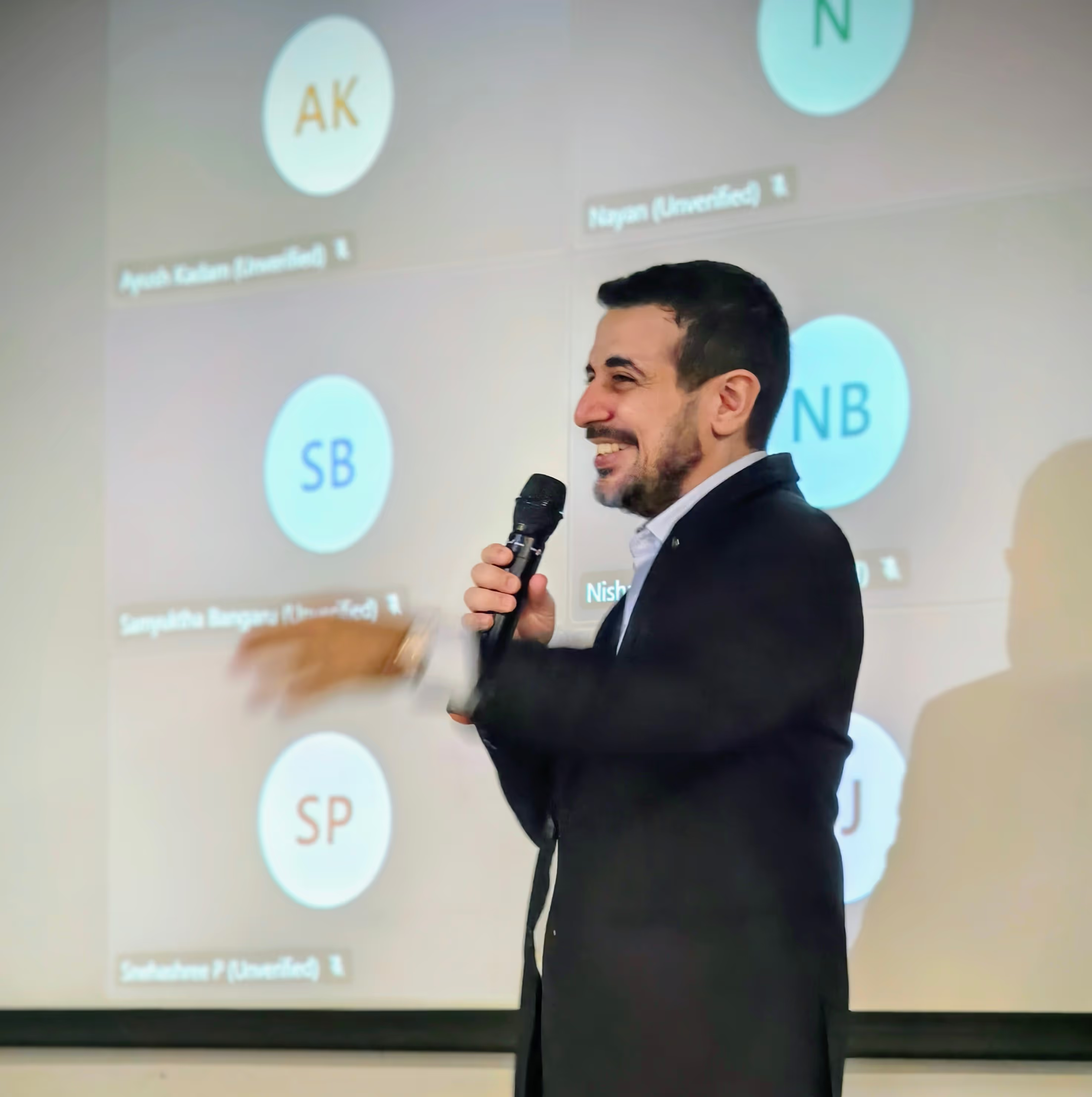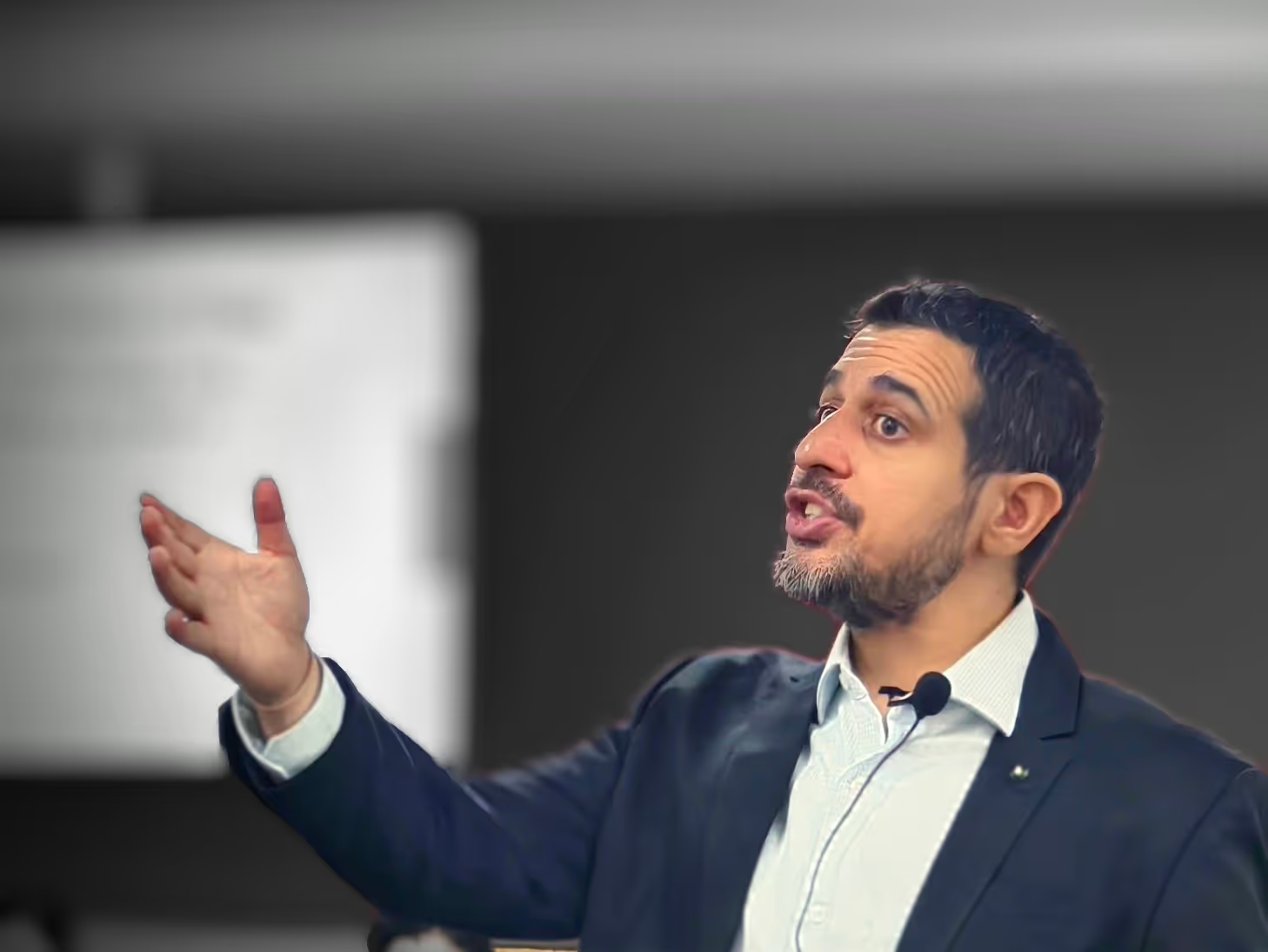
The Meta Model in NLP is a linguistic (language based) tool developed by Richard Bandler and John Grinder in the 1970s as part of their work on NLP - Neuro Linguistic Programming.

Meta Model is a set of questions designed to enable a person to recognise the generalisations, deletions and distortions a person is carrying about the world which is limiting his quality of life.
Further, through the challenges in the form of questions, it enables the person to expand his/her mental map of possibilities or to discover that they have no idea what they are talking about.



In day-to-day interactions, Meta Model enables individuals to better understand, clarify and respond to others, which in turn, leads to more meaningful and impactful communications.
The Meta Model questions help individuals to question vague or ambiguous statements, ensuring greater clarity and mutual understanding.
The goal of the Meta Model is to make conversations more specific, detailed, and accurate, thus allowing deeper understanding and more effective problem-solving.
The Meta Model consists of specific questioning techniques that are aimed at addressing three core patterns - Distortions, Generalisations and Deletions.
•Distortions: These happen when individuals misrepresent reality, often due to assumptions of misinterpretations.
Some of the Meta Model for challenging distortions are -
1) Mind Read - When a person claims to know a person's thoughts and feelings.
E.g. – “He doesn’t like me.”
Meta Model question: "How do you know he doesn't like you?"
2) Cause and effect - When the cause is put outside of the speaker without justification.
E.g. - "You make me angry."
Meta Model question: "How specifically does what I do makes you to choose to feel angry?
3) Complex Equivalence - When two experiences are equated as being synonymous it is called as Complex Equivalence in NLP.
E.g. - "She yells at me; she doesn’t like me."
Meta Model question: "How does her yelling mean she doesn’t like you?"

•Deletions: - When crucial details or context are omitted.
Some of the Meta Model for challenging deletions are -
1) Unspecified Noun: When a noun is deleted.
E.g. - "I'm going."
Meta Model question: "Where specifically are you going?"
2) Unspecified Verbs: When the sentence structure or verb does not specify the process.
E.g. - "He rejected me."
Meta Model question: "How specifically did she reject you?"
3) Lack of referential index: When a pronoun is unspecified.
E.g. - "They don’t listen to me."
Meta Model question: "-Who specifically doesn’t listen to you?"
4) Comparative Deletions: When a hidden comparison is made.
Some of the words that indicate that are - Good, better, less, least, worse, etc.
Without a specification with whom or what the comparison is made.
E.g. - "She is better"
Meta Model question: "She is better than who/whom specifically?"

• Generalizations: - These are when statements are overly broad & fail to account for exceptions.
The Meta Model for challenging generalisations are -
1) Universal quantifier: When a generalised statement is made which is reflected in their statements which includes words such as "All, always, everybody, nobody, never".
E.g. - "“I always fail at this.”
Meta Model question: "Is it always? Each and every time?"
"There are probably times you have failed and there are times you have not failed. Can you think of a time when you had not failed, and you succeeded at this?"


1. Improved Clarity and Precision: The Meta Model helps in making communications clearer & more specific by identifying vague language and prompting more detailed responses. It helps both individuals in a conversation to understand each other better, thereby reducing confusion.
2. Enhanced Problem-Solving: By exploring the underlying assumptions and meanings behind a person’s language, the Meta Model helps uncover the root causes of issues. This can lead to more effective problem-solving and decision-making.
3. Increased Empathy and Understanding: The Meta Model encourages active listening and questioning, which helps a person to understand the speaker’s perspective more deeply. This fosters empathy and helps to avoid miscommunication.
4. Breaking Limiting Beliefs: People often use generalizations and distortions out of limiting beliefs about themselves or others. The Meta Model helps to challenge and break these patterns, promoting more empowering beliefs.
5. Stronger Relationships: The ability to communicate more clearly and listen effectively strengthens personal and professional relationships. The Meta Model is particularly useful in resolving conflicts, as it promotes open communication and understanding.
1. Personal Relationships: The Meta Model can encourage healthier conversations and help individuals, better understand each other’s needs, desires, and concerns by uncovering the true meaning behind vague statements or emotional reactions.
For example, instead of reaction to, “You never listen to me.”, asking, “What do you feel I am missing?”, can shift the tone towards resolution.
2. Business and Leadership: In workplaces, leaders and managers can use the Meta Model to clarify team members’ concerns, identify problems & provide constructive feedback. It helps in creating a culture of open communication, trust and mutual respect.
For instance, when an employee says, “This project is overwhelming.”, asking question like, “What specifically do you find overwhelming?”, can help breakdown challenges into manageable parts.
3. Therapy and Coaching: Therapists & coaches can use the Meta Model to help clients, explore the deeper meaning behind their thoughts, feelings & behaviours. By challenging distortions and generalizations, therapists can help clients reframe their perspectives and break free from limiting patterns.
For example, if a client says, “I can’t achieve my goals.”, a coach might ask, “What’s stopping you?” or “What would success look like to you?”
4. Negotiation and Conflict Resolution: The Meta Model is also a useful tool for mediators and negotiators. By clarifying what each person truly wants or needs, it helps move toward mutually beneficial solutions, ensuring that both sides are heard and understood.


1. Be Curious: Approach conversations with genuine interest and a willingness to explore underlying meanings.
2. Practice Active Listening: Pay attention to both, verbal & non-verbal cues to fully understand the speaker’s message.
3. Stay Neutral: Avoid sounding confrontational; focus on clarifying rather than challenging.
4. Be Patient: Using the Meta Model requires time & practice, to become effective & natural.
The Meta Model is more than just a tool for enabling a person to change their map of the world and for effective communication.
It’s a pathway to break down language barriers, clarify misunderstandings, and foster deeper connections.
It can help to improve personal relationships, enhance workplace communication or resolve conflicts.
Learning to apply the Meta Model, can make conversations more productive, insightful and meaningful. By asking the right questions and encouraging others to provide specific, detailed responses, the Meta Model enhances clarity, reduces miscommunication and promotes a deeper understanding of each other’s thoughts and feelings.
By honing this skill, one can not only improve one’s ability to understand others but also to empower them to express themselves more clearly – which is a true cornerstone of Effective Communication.
Further, it is as essential tool to learn for those who aspire to become an NLP coach or Life Coach.
You can learn how to apply NLP Meta Model in the NLP courses which is offered in various cities such as:
NLP course in Mumbai
NLP course in Delhi
NLP course in Ahmedabad
NLP course in Chennai
NLP course in Hyderabad
NLP course in Bangalore
Online NLP course
NLP Practitioner course
